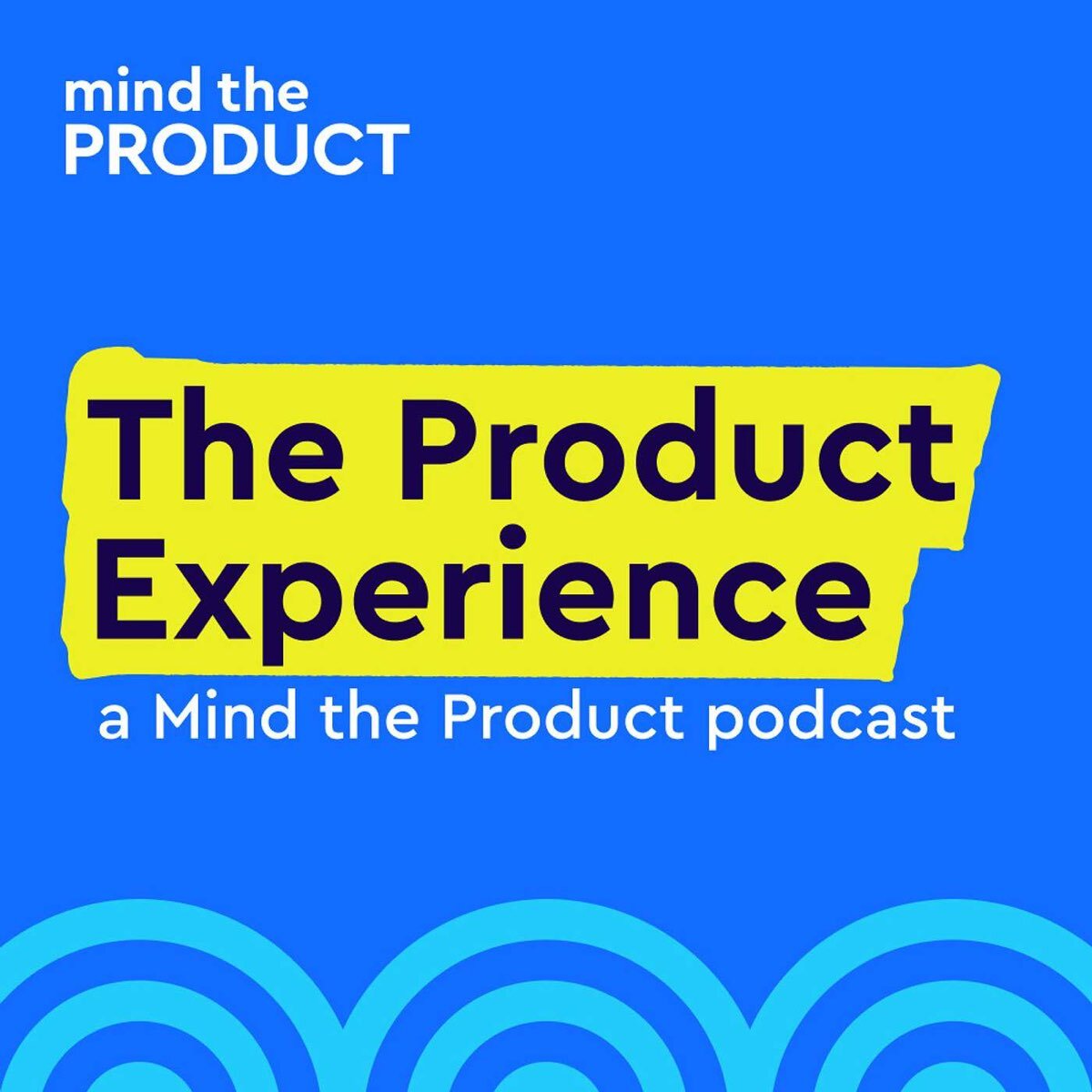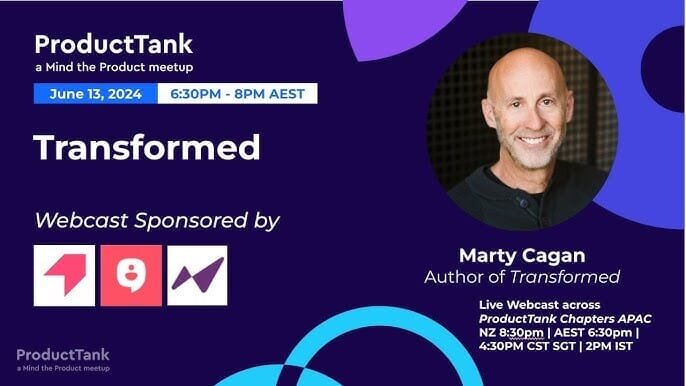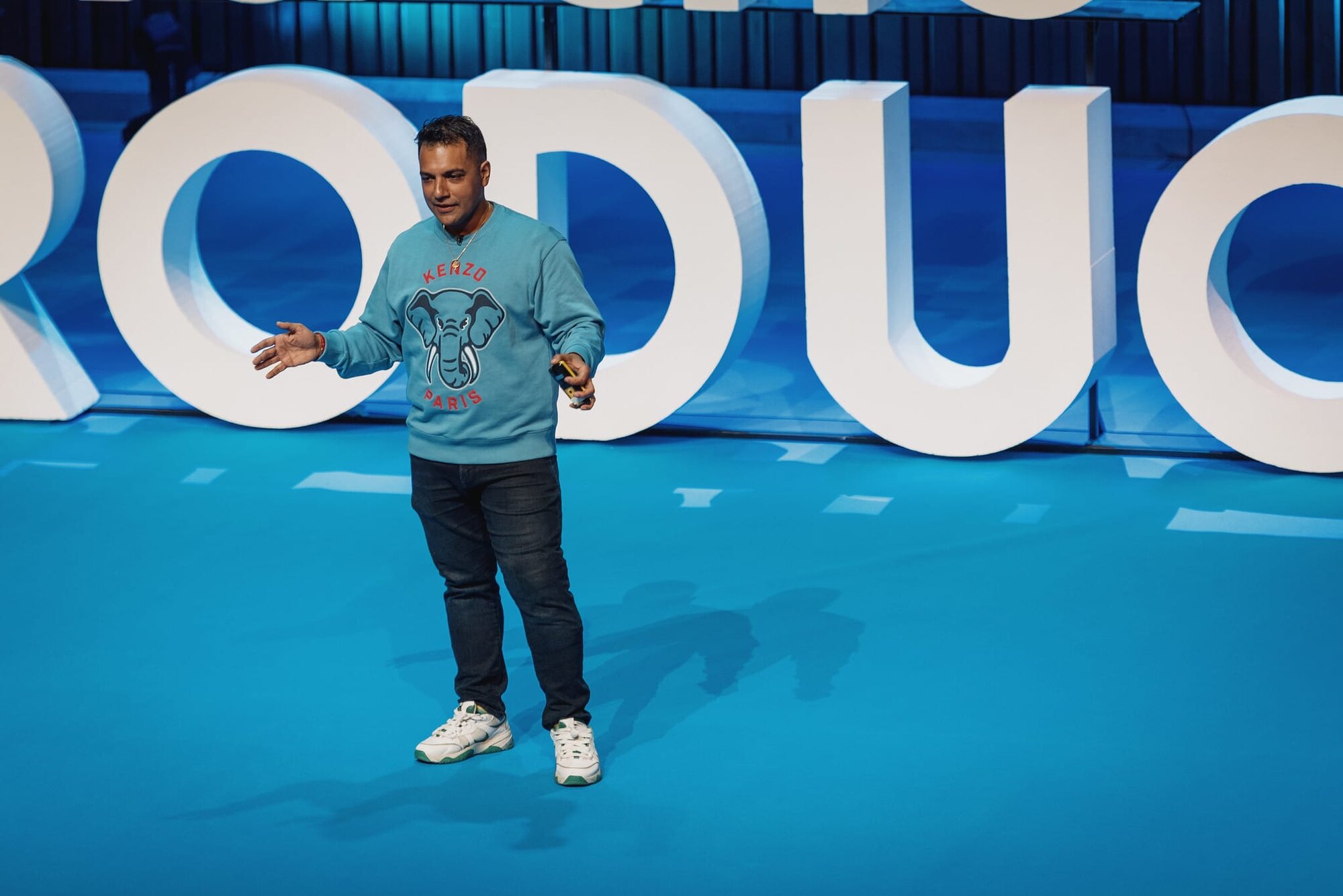Building and managing products is hard. Building an organisation that manages existing products, and is optimised to build new ones is exponentially harder — which is why we spoke with Cait O'Riordan, Chief Product and Information Officer at the Financial Times, for this week's podcast. A veteran of the BBC and Shazam, she's now working at Board level to create an environment that works well at all stages of product development.
Listener Offer: This episode is sponsored by Stream. Stream makes it easy to give your users the perfect experience, right inside your own app. Try Stream for free at getstream.io.
Featured Links: Follow Cait on LinkedIn andTwitter|Hedging Your Bets – Lucie McLean on The Product Experience |Killing Zombies – Lisa Long on The Product Experience | Simon Wardley's 'Pioneers, Settlers & Town Planners'
Discover more: Visit The Product Experience homepage for more episodes.
Episode transcript
Randy Silver:
Lily, can I trouble you for some career advice?
Lily Smith:
Anytime.
Randy Silver:
So, I've got this issue in that most of my career in product I've spent optimising existing products, but I'm working with a company right now where we have to launch some stuff, and it's just not my specialty, what would you suggest where do I start, and got any hot tips for me?
Lily Smith:
Well, I could rattle off a few hot tips, or you could just listen to this week's episode of the podcast. So, this week we spoke to Cait O'Riordan who's chief product and information officer at none other than The Financial Times.
Randy Silver:
Yeah, it was really interesting, she talked to us both not only about launching new products, but how to maintain the existing products, and how to make sure you're not cannibalising one for the other, or when to cannibalise one. It was a great chat.
Lily Smith:
So, if you want to know when to start looking at launching new products in your business, and how to manage that alongside your existing product set, then this is the episode for you. And right at the end, she does a great spiel which made be remember exactly why I love my job, so listen to the end.
Randy Silver:
And actually one more thing, there's something she said after we stopped recording that I think we should drop in, which is she's also hiring, so if you're inspired by this, go look at the job boards.
[Advert]
Lily Smith:
The Product Experience is brought to you by Mind the Product.
Randy Silver:
Every week, we talk to the best product people from around the globe about how we can improve our practise and build products that people love.
Lily Smith:
Visit mindtheproduct.com to catch up on past episodes and to discover an extensive library of great content and videos.
Randy Silver:
Browse for free, or become a Mind the Product member to unlock premium articles, unseen videos, AMAs, round tables, discount store conferences around the world, training opportunities, and more.
Lily Smith:
Mind the Product also offers free ProductTank meetups in more than 200 cities, and there's probably one near you.
Hi Cait, it's really lovely to have you here on the podcast with us today.
—-
Cait O'Riordan:
Hi, lovely to be here.
Lily Smith:
So before we get kicked off with our topic of the day which is new product development, how about you give us a real quick potted history into your background in product, and how you got started, and what you're doing today?
Cait O'Riordan:
Yeah. So, I've been doing products for about 15 years now. I started in 2006, and at the time, I was a journalist at the BBC, and this was in the UK at the time, a relatively well-worn path, which was journalists moving into product management. My reason for moving was certainly at the time it felt like a lot of the creativity was in how the content got to the customers rather than in the creation of the content itself, and I also felt like there was probably more career development in product management than in straight journalism, which is what I was doing. So I made the switch into product management, and I did a lot of news product management, which fitted very well with my background, and I then made a switch into sport in 2010, and I became head of product for sport at the BBC where I was responsible for delivering all the digital content for the Olympics in 2012, which was an amazing experience, and really where I learnt the first of all of my leadership skills.
From the BBC, I went to Shazam, where I was VP of product, and I set up the product team in London for Shazam. Shazam, for those of you who don't know, makes a music app. And then against all of what I've said, which was I loved working in pure technology, I was never going back into legacy business ever again, I then ended up at The Financial Times. I love the FT, I love the brand, and inside the FT is a lot more progressive than it might seem from the outside as a 130+ year old business. We have a really good understanding of the data that drives our business, and a very, very successful subscription business. Subscription businesses are great. I really like doing product management on subscription businesses, and I have a team of around about 470 people globally. I am responsible for all of product and tech, including old-fashioned IT CIO-type work, all the way through to product development, and my team is in the UK, Bulgaria, and in the Philippines.
Lily Smith:
Awesome. Thanks Cait. So, we're talking today about new product development, tell me about how you get started with fitting that into such an old business and quite a large business as well?
Cait O'Riordan:
So, we've been having go at it for a while at the FT, and I think it has taken us a while to get into our stride. Last year, as it was for many, many companies, was extremely disruptive for the FT. Lots of ways in which we make money, either through newspaper circulation or conferences business, or print advertising, as you can imagine, were under a considerable amount of strain. Our subscription business was doing phenomenally well because people needed the FT to help them navigate through the chaos and confusion of last year, but that did also give us an opportunity to take a step back and think about our strategy, and think about how we would accelerate our subscription business much faster than we were currently doing. And the FT grows at a reliable 10% year on year plus in it's subscription business. As I said, I love subscription businesses.
If you get the mechanics right, they grow very, very nicely. But what we wanted to do was to build additional products that help support that business. And one of the things that you won't really know necessarily from the outside of the FT, is that we have two businesses inside our subscription business, a B2B business which is selling groups subscriptions into the likes of Citibank, Bank of America, and then a B2C subscription business which is selling individual subscriptions. So, we looked across all of that business and really focused on where we thought the opportunity was to grow those businesses.
And 2021 is all about validating that subscription strategy, which means an awful lot of new product development. But I would definitely say that for a established business of a considerable size like ours is, you need to know where your new product development fits into your product and your business strategy, otherwise I think you will just continue to play in the shallows. You need something that is ambitious, that goes, this is where we need to get to, which then de-risks some of those early steps that you might take in testing new products.
Randy Silver:
So in doing that, it sounds like there's a few different components there, you have to have the right people, you have to have the right strategy, and you also have to have the right processes for dealing with both the legacy and mature products, as well as doing the new ones, what's the biggest challenge around creating this space where you've got all that stuff churning along and running well, but creating a new space and a new attitude for launching new things?
Cait O'Riordan:
So, I think getting the business buy-in is probably the hardest thing. That said, the FT, as I said, is very much more forward-thinking than you might think from the outside. So we work really, really hard. And I have a CPO called John Kundert who worked with a very, very small team of people to pull the product strategy together, but we were to a certain degree pushing it an open door because it was an excellent strategy for a start, but also there was a feeling around the business that there was a moment in time where we needed to think about how we were going to grow faster. So I think that's the most difficult bit for most companies, but actually for us, I think the difficulties are different, and I think it comes down to having the right people with the right experience of doing this kind of product development, because it's not the same as iterative product development on an existing product.
And it's also about creating the space, I think, as you said, Randy, for them to be able to do that experimentation, and to have enough oversight so we know what they're doing, and what their OKRs are, and where they're trying to get to, but nothing that is down in the detail about thinking about what they're doing and signing it off. And that's really where our focus has been over the last three months, is getting all of that up and running.
Randy Silver:
So, you're doing that at the senior level, you've got the buy-in, and you said that's fantastic. Sometimes one of the problems I've seen in the past is you have the buy-in at the senior level, you've got the right people, you've created this team, but you're trying to do this within the space of a legacy business, and there are all kinds of processes and stage-gates, and InfoSec, and procurement and 1,000 other things, how do you create the environment for this team to have the permission to do the job that they need to do?
Cait O'Riordan:
So, we were building and are building on a culture of empowered teams. And so I think we don't stage-gate stuff really. I mean, there is oversight, and we can talk about OKRs in a bit, but there isn't a very, very heavy process. Procurement is difficult, mostly really because of a lot of it is around data protection, because we have a very valuable customer base at the FT, and we don't want to do anything that would imperil that. So, working with very small startups and making sure you've got the right data protection in place can be tricky. So, I think my teams would say procurement could be faster. That said, again, I think we have a very good procurement team at the FT who really understand our needs. I'm going to talk a little bit about how we work together at the FT, because I think that's really key to answering the question.
So last year in 2020, we copied an idea from The New York Times around using missions. So having company-wide missions where we have people from across the business who are responsible for delivering on the strategy. So, that will include product managers, tech directors, so engineering leads within my team, as well as people who work in B2B and B2C marketing, as well as editorial, supported by people who work in data, who work in finance. And I think it would have been incredibly hard for us to do the new product development in 2021 if we hadn't spent 2020 working out how we were going to work together better. Because what I was seeing before we put missions in place, was that people were going after smaller and smaller opportunities because that's what they could get consensus around.
There was a very strong consensus-building culture, which meant that they would have long conversations, and then they'd go, "Oh, that sounds really difficult. I don't know how we're going to do that, but that thing we can all agree on," which is really small, and is not going to move the needle in any way, shape or form, and we're going to spend a lot of time doing that. What missions did was allow us to go, "We want you to think much bigger. We want you to go after opportunities that have lifetime value in the millions, not in the tens of thousands, and that you need to come to us with a proposal as to how you think you can best achieve that strategy."
So, 2020 was a really foundational year for us to be thinking about thinking bigger, thinking about big opportunities, thinking about how we can size them from a lifetime value perspective, which I think then meant we had all of that in place when it came to right now we're doing new product development on top of that. I think if we'd gone straight for the new product development without any of those foundations in place, I think we would have gone round in circles for much longer than we have.
Lily Smith:
Okay. So in terms of the teams that you have working on the missions, so how do you decide which cross-functional team is going to work on which mission? Because you mentioned earlier about how it's quite different optimising a product versus working on brand new product development. So, are there certain skills that you're looking for in those teams in order to be able to tackle that new product development side of things?
Cait O'Riordan:
Yeah, you absolutely need different skills, and you really need people who have done it before. So, who have either worked in a startup environment, or have worked in maybe a more pure tech environment where they're more used to trying and launching new products. And as you said, it depends on which bit of it you're working on. So for example, we have a team who's thinking about how do we add value to our enterprise clients, our B2B business, to help differentiate the B2B business from our B2C business. And what we're thinking about is how people will use the product differently, because they're using it to make themselves better at their job. And they're building on top of FT.com, but don't have responsibility for the whole of FT.com in order to be able to be successful. So, they're a really small team.
They're eight people made up of engineers and product managers and designers who are prototyping stuff, testing it, talking to audiences, talking to customers all the time, talking to clients all the time who have really deep experience of running a B2B business, but also really deep experience of doing new product development. And they're able to go relatively fast because they're not responsible for the whole of FT.com or all of our apps. It's different for the team that's thinking about how do we accelerate our B2C business, and they're thinking about how can we make a lighter product that is maybe less expensive, but has less content in it that we can sell more successfully in markets which aren't our primary markets, so places like the US or Asia, for example.
But they have the responsibility of the whole of FT.com and the apps, and that's really about making sure that you've got really clear funding that says, "This is for your new product development, and this is what we want you to achieve, and this is the money that you have for delivering the consistent year-on-year growth in our subscription business." Because money is also important. You've got to make sure that these things are funded. Not overly funded from a new product development perspective, but enough so that you can protect your existing business, plus do the stuff on top of that as well.
Randy Silver:
So I'm curious about the teams themselves. So you've got people who are working on these more established products, and you've got people working on trailblazing, and there's the concepts that you may have come across of pioneers, settlers, and town planners, do the people working on the new development, do they just work on the new stuff and then they hand it over, or do they take it and they build it into something that is stable and long-lasting? What's the best way of dealing with different personality types for this type of thing?
Cait O'Riordan:
So, we're trying to encourage all of these residents to live together happily, and that's not straightforward. I mean, we have a tech strategy at the FT where if you build it, you look after it. And so if your thing breaks at three o'clock in the morning, you are the person who's going to be called to fix it. And that's really important to me. It's really important to me to have durable teams who are responsible for technology, but we have had to approach the problem of how does this new enterprise team that I was talking about earlier build on top of FT.com, because that does create a separation of responsibility. And obviously at the most basic level if the FT.com engineer is thinking, "I'm going to be called at three o'clock in the morning," if their stuff breaks, so we've had to do a lot of work thinking about how do you look after your tech estate, how do you pay down tech debt, how do you make sure that all of that stuff happens.
And that did take some time, it took some negotiation quite honestly with my CTO working with his tech directors to work out how we could build on each other's estate, because that's relatively new for us, but we are managing to do that now. I think we're going to have a conversation about MVPs in a bit, and I think that is when it gets tricky, is when your MVP is a product and people are using it, and how you go from there. So we haven't solved all of that, but it has taken some effort to fix it, I think.
Lily Smith:
Yes. So on the point of MVPs, you're obviously a big brand with a reputation to uphold, how do you explore MVPs? What does an MVP mean in terms of the products that you're testing and trialling, and how do you manage to put something out that's the bare minimum, whilst also protecting, I guess, the reputation that you have?
Cait O'Riordan:
Yeah. So, we're okay at it actually, I think. I don't want to give the impression that everything is rosy in the FT garden with pink flowers everywhere. There are lots of difficult things that the team is much more in the detail of than I am. But I'll give you an example of something that we built relatively recently. So, we were talking about enterprise products. The first thing that we wanted to build was something that goes by the glamorous name of enterprise gifting. So, the concept is, is that you work in a big bank, for example, in London, and you have found an article on the FT, and you want to share it with your customers. Maybe we've written about your bank, for example, and you want to send it off to your customers and say, "Look, this is what people have written about us at the FT." At the moment, that's quite hard, because we have this lovely paywall which makes lots of money for us because we're a subscription business.
We don't make it very easy for you to send an email out to 100 people and say, "Hey, look at this." So the hypothesis that we wanted to test was if we made it really easy for people to do that, that we could sell that at an additional price, or use it to differentiate between our enterprise and our B2C products. And we built something really, really basic. Worked with just a handful of companies and said, "Will you test this with us?" And they agreed. And it was a horrible user journey, but we did enough of that to be able to iron out all the problems and see if that was something they were interested in, and was anybody using it at all before we then built it into FT.com.
So, we did that. It was hacky, it was horrible, but there was enough to show that people were using it. And so the next stage of that is to make it so that if you're part of that trial, that it appears on FT.com and it's a much more seamless journey, but we went through those phases first. So, build something horrible outside FT.com, and then when we've proven that there is an appetite for it, then we bring it into Ft.com and make it easier for them to use. We're also at the moment testing a new home page in beta, and putting people into that beta trial. And we've got long experience of doing that at the FT. We rebuilt our whole website before I actually started at the FT five years ago, and that was all done in a public beta.
So, the company is used to it as something that we'll do that we will put something horrible and hacky out. I think the bigger problem is not the worrying so much about the audience, but about thinking about when do you make the effort to turn the MVP thing into something that is sustainable, and is lasting, and that pays down your tech debt, because I think every product manager listening to this will know it's awfully hard to kill products, and there's a lot of zombie products out there, how do you then make sure that you go back and turn that into good things. That's the stage where we're focusing on now, I think.
[Advert]
Randy Silver:
Sometimes our users need their questions answered in the moment, and we can't be there quick enough to help. A chat app can be the perfect solution. And the good news is, your team doesn't have to reinvent the wheel.
Lily Smith:
In fact, their scalable APIs and SDKs enable your team to ship a custom chat feature in a matter of days, not months.
Randy Silver:
Try Stream for free at getstream.io. That's getstream.io.
—-
Lily Smith:
Yeah, and you've mentioned a couple of times that you don't use strict or rigid stage-gates to make decisions on the different projects or products that you're exploring, so do you have a method for deciding whether something has done enough to go into a next round or have some more resource put on it, or have more investment?
Cait O'Riordan:
Yes, kind of. So, most of it is done through OKRs. So, we have objectives and key results across the whole subscriptions business. Each mission is working on a particular thing, and the particular part of the sub-strategy will have their own part of the sub-strategy to deliver, and they will commit to the key results that they're aiming to deliver on that quarter, and myself and the rest of the board, so that we have a subs-council which is made up of… I'm on the board of the FT. It's got someone very senior from editorial on it. It has the head of the B2B business, the head of the B2C business, and the CFO on it, and we will review the OKRs, see how they've done the previous quarter, talk about what did go well and what didn't, and roughly go, "Yeah, that feels like the right things for you to be working on next year," via the key results.
If, for example, we are changing the whole subscription model at the FT, that's quite a big deal, and that might require some more dating-type processes in terms of what have we learned, what have we tested, what do we know, what do we think about how it's going to cannibalise our existing business? There's likely to be more discussion about that when it's really, really big stuff. There is nothing that is like a design review or any kind of pre sign-off process for anything. I mean, if I see some designs before they go out, it actually makes me feel slightly uncomfortable. I'm just not used to doing it. I literally never look at them. There isn't that kind of gating process, which I'm very, very pleased about.
Randy Silver:
Can we talk about dealing with the board for a minute? So, you're in a good process where you're part of senior management, but you're also on the board, so you've got this great position to be able to have a peer relationship with people, but a lot of other companies, that's not where the most senior product person sits, and certainly the people on your team aren't in those sessions, so what's the biggest mistake you see with people when they're… Most product managers, no matter how much we try to big it up, it's really a middle management position. So when you come in and are trying to deal with someone at that level of seniority with the board, what's the mistake that you see people making and the thing that you counsel your team on on how to deal with the board members better?
Cait O'Riordan:
That's a really good question. The FT is a very nice place to work, and everyone is very, very collaborative, and I am very fortunate in that I am trusted to get on and do my job, and nobody else really tries to do it for me. What I see sometimes, is I think it comes back to ambition actually, and appetite for risk. I think at the board at the FT, we have a relatively higher appetite for risk and certainly very, very high ambition. And I talked about how we put some processes in place to try and encourage people to come up with bigger ideas and take more calculated risks. And I think quite often you'll see people endlessly trying to kind of, again, build that consensus and come up with something that they feel as palatable before necessarily coming to the board and saying, "Does this kind of sound okay? Are you all right with this?"
Because I think that our appetite for risk is possibly higher than people will understand. And then there is just the general thing of being on the board and people feeling like they can't approach you, and certainly we're much less approachable than we used to be because we're all at home and you can't just walk up to someone's desk. And so trying to create that atmosphere where people feel that they can make mistakes, and that they can learn from mistakes, and that we are supportive in them taking risks in order to be able to go after bigger opportunities, I think. But I think the onus is on us as a board to make that clear. That's not a vault of a senior product manager, for example, that's my job to make that clear that that's what I want people to do.
Randy Silver:
That's fair. But if I was the senior product manager coming in and pitching something to the board or giving an update, what's the mistake that you see people making? Do they get too into the detail? Do they gloss over things? What's the best way of making sure that they are owning the mistakes, owning everything, but not embarrassing themselves and setting themselves up for future success?
Cait O'Riordan:
Yeah, I see a bit of that, and we've just been through the fun that is OKR week when everybody comes and goes through their OKRs. And sometimes I feel like I have to kind of remember actually, "How long have I seen that for? Is that been with us for three quarters now? And actually, is that really working, and are you actually blocked?" Do you know what I mean? I think sometimes there is a kind of trying to put a good gloss on stuff and say, "Oh, this is what we're doing."
And I'm getting old, my memory is not as good as it once was, I'd much rather that somebody said, "By the way, Cait, [inaudible 00:27:02] this is the third time you've seen it." I mean, actually I do remember this stuff, but sometimes I feel I have to work quite hard and [inaudible 00:27:07] afterwards and go, "Actually, I'm not sure that's… I think you're stuck. I think you're actually blocked and you're not going anywhere at all. And that's fine. And what can we do to help you? And should we just stop doing it? Is this not working? Is the opportunity not as big as it once was."
And so I definitely see some of that, because people try to put a good picture on what they're doing, and people quite often are trying to please people. I don't like talking about stakeholders, but there are people around the business who want stuff to happen, and they're trying to be helpful and trying to make those things happen. And sometimes just saying, "No, that can't happen because I'm focusing on this opportunity," is much, much the better thing to do, and I would much prefer to see it than someone creaking along on lots of opportunities and not necessarily closing any of them off or seeing the benefit.
Lily Smith:
I think that's one of the things that I find really interesting around as a product manager working on brand new product development in a kind of larger organisation. You have your pragmatic, slightly cynical product hat on that wants to see all the data and wants to see the proof and the evidence and everything that the direction you're going in is the right direction, but at the same time, there's a bit of entrepreneurial spirit required in order to get these things off the ground. And there was a talk, Mary Poppendieck from 3M, an author, did a talk about product champions within larger orgs that seemed to be those product entrepreneurs, but then those people need someone to come along and be the cynic in the mix, because it must be so hard to play both of those roles.
Cait O'Riordan:
Yeah, I think so. And I think the FT is very data-driven, as I've said, and the temptation is to always ask for more data. And particularly when you're talking about something like cannibalization, which is very, very hard to either prove or disprove. There are signals that you can look for, and the best indication of what's going to happen in the future, is what's happened in the past, so what can we learn from other things, but it is hard to prove that you have… For example, I talked about building a lighter product, sell it at a different price, differentiate that from our very, very valuable B2B, but there is going to be a rubber-hits-the-road moment when we have to go, "Actually does this light app mean that our B2B customers might be more likely to downgrade onto a cheaper product?" And that's going to be hard.
And that I think will require courage. And I think that's the moment when you need senior people who are able to kind of either go, "No, that's not going to work, but hopefully no, I think we're okay, I think we can keep going." Because it's not always also not fair to ask… I don't like your middle manager phrase, Randy, but people who are in the middle of a business to take that responsibility for the entirety of the future of the FT. But I know where it comes from, and I think that's when I think people need support. And I think when you talk about gates and processes, they're all useful, but I think what's much more useful is creating an atmosphere where they're getting the right support at the right point to go, "Yeah, I think you can keep going. I think there's something exciting here. You should keep going," versus, "No, I think we're off," and more likely [inaudible 00:30:48].
If we have a product that's flying off the shelves that thousands of millions of people are using, I'm very happy to discuss the cannibalization risk at that point. What's much more likely is, "Oh, okay, this is the third quarter I've seen this thing, and I don't think we're making any progress, and I'm not sure this is ever going to actually work." So, that is what I see a lot more of, is people just keeping on, keeping on, because they've got some cost bias into something that they've worked very hard on.
Randy Silver:
Okay. So I need to make it clear, I don't like the middle manager phrase any more than you do, however, I think it stems from the fact that a product manager has an awful lot of responsibility, but when you were the product manager or the head of product for this, you have a certain perspective on the world looking at it from what you're spending your day-to-day on, and it's hard sometimes to step back and see the full big picture, and see the context of everything that someone else at a different level of perspective in the org might have. So, we started off this conversation, you mentioned a very large number of people that are in your part of the organisation, and I'm curious, with that challenge around perspective and that number of people, how do you keep everyone aligned and communicating, working well together? I mean, you're managing teams of teams, not just teams.
Cait O'Riordan:
Yeah. Yeah. So the way that my teams are organised, is they are roughly divided into six. So we have a team of people who look after FT.com and the apps, we have a team of people, for example, who look after our core product, so our platforms, our membership database, our data platform, our content platform. I have a team who look after internal products as well. So yeah, one of the reasons why my team is so big is I'm also responsible for things like Salesforce, CRM, email marketing platforms, all of that tech that is required to run the subs businesses is also my team. Plus I have teams who are responsible for networking and security and making sure that I've got a computer that I can talk to you on, all that. So yeah, there's a lot of it that is running the infrastructure of the FT as well.
I mean, my team is responsible for getting a newspaper to a print site, there's a level of complexity to it. But each of those teams is autonomous, so they will have a leadership team that will certainly include product and engineering, and sometimes also includes delivery as well. And that leadership team is responsible for delivering the OKRs of that bit of the organisation. They tend to roughly line up as well with missions, which is useful, because as I said, durable teams with responsibility for tech is really, really important and a really important part of making sure that you have a sustainable estate that you look after. And so all of that is managed by our OKRs. So, that's managed by OKRs by the subs business, and OKRs that are really just departmental OKRs that are thinking about cyber security, for example.
And so where I see what people are working on is really in an OKR review process, and then there are other things. But there is a lot of communication in any product organisation, and the communication that is going out to the wider business that is aimed at going, "Look, you're in safe hands. We're building exciting things, and this is the strategy, and this is how we're getting there, and this is what we've built." There's that kind of communication. There's lots of communication that is, "I've built a new product," and telling people about that. And then there's communication that's for the teams around… And as you can imagine, over the last year, a lot of my time has actually been taken up with that, about how do we work together? How do we make sure that we all have an OKR to have three hours of productive work each day? Because as we all went home, everyone just spent their entire time in meetings and wasn't able to do any work.
So, there's lots of communication that is around how we work together, and how we treat each other, and all those sorts of things that are also really, really important, but it is a big overhead, comms, and if you don't get it right, you will pay the price. Because if you're not doing the comms of the wider business that says, "You're in safe hands. This is what we're doing," then the the business will be thinking, "Am I in safe hands? Do product and tech know what they're doing?" And if you don't do the comms that is to the team about how you want us to work together and what's important, then we're all little atoms in little rooms all around the world doing our own thing, and people will become disconnected from the important things that we are doing. So, it's a big part of what I do, is talking to people and doing comms, doing written comms, all of the above.
Lily Smith:
Awesome. Cait, it's been so great talking to you. I'm just going to ask you one more question. I'm going to circle it back round to our topic and ask, what is your top tip or your one inspired piece of advice for those embarking on bringing new product development into their strategy?
Cait O'Riordan:
So, I think [inaudible 00:36:02] about something new that we haven't talked about, which is product discovery, which is really, really important that you have a good discovery process, and to think about how you are going to test things with customers as soon as possible, and get some answers about whether you're on the right tracks or not. And I've said I've been doing product management for 15 years, talking to customers and validating your idea has always been the thing in product management, it's no different in new product development. The sooner you can talk to a real actual customer and show them something that is a prototype or a piece of paper or anything that helps validate your idea, the better. And you should be thinking about your product development process and your product discovery process as a product in and of itself, because you will try a product discovery process, and what happened to us is there were things that were stuck nine months in product discovery, and we're still with no nearer understanding whether the customer wanted it or needed it or we could make it.
And so think about your product discovery process, and continuously think about how you can make it better. Think about where you are stuck, think about why things are taking too long, because at the end of the day, you have to move faster, you have to think about how you can get answers quicker so that you can validate your ideas, so that you can build great products that people want, and you can go out and make some more money. That bit of the process is the most important and where you should be focusing as a product manager on doing.
And then whoever your me is, hold her to account for doing all of that boring stuff that I've prattled on for about 25 minutes on that creates the space in order for you to be able to do the work so that you can do the work. And that's what we should be talking about, is the work, and how exciting the work is, and how great it is to make new products, and how great it is to make new amounts of money, because you've found a product need that your customer wants that you can build, that you can sell to them and make their life better. That is where you should be focusing your efforts.
Lily Smith:
Awesome. Cait, thank you so much for joining us on the podcast. It's been so lovely to have you.
Cait O'Riordan:
That was really good fun. Thank you so much for inviting me.
Lily Smith:
Okay. So I've just about finished all of my gushing and love for Cait O'Riordan. Definitely my new product crush in the world.
Randy Silver:
Oh, she's fantastic. I've had a chance to meet her once or twice, and it's just always great to listen to her, and it was great to get her on the podcast to get some of that wholesome product goodness knowledge stuff.
Lily Smith:
Definitely one of my top product gurus.







